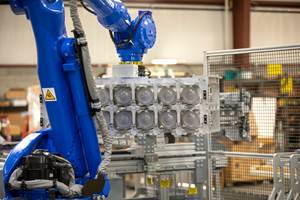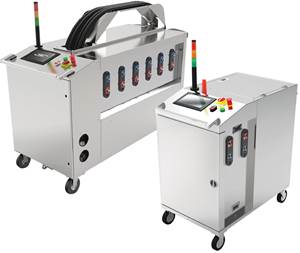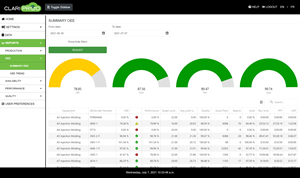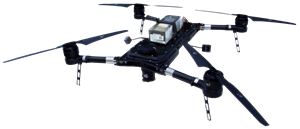Advances in Molding, 3D Printing At Arburg ‘Technology Days’
Over 6700 visitors saw more than 50 working machinery exhibits highlighting automation, connectivity, and sophisticated processing.
The first metal-powder injection molded smartphone frame, PP-IML containers molded in under 2 sec, a new additive-manufacturing development center, and several hints of innovations yet to come were just some of the attractions at the annual Technology Days exhibition hosted by Arburg GmbH & Co KG at its headquarters in Lossburg, Germany. Arburg has hosted these events each year since 1999. What it called “the biggest in-house event in the industry” attracted more than 6700 guests from 53 countries, including around 170 from North America and 125 from China. Displays throughout the company’s 1.84 million ft2 manufacturing plant included more than 50 machinery exhibits in action, highlighting themes such as medical, packaging, electronics, and automotive molding, lightweight structural solutions, LSR, robotics, Industry 4.0 connectivity, individualized production, additive manufacturing (3D printing), and the company’s ability to supply complete turnkey cells.
A number of working exhibits reprised demonstrations seen at the K 2016 and Fakuma 2015 shows. A prominent example was Arburg’s new Allrounder 1120 H hybrid press—it’s largest ever—with 650-metric-ton clamp and brand-new Gestica controller, assisted by a new Multilift V 40 linear robot with payload capacity of 40 kg (88 lb). Three or four of these presses are in beta testing at customers, and Arburg anticipates full commercialization in 2018. The company also plans to gradually extend the new gesture-enabled Gestica controller to additional machine models, starting at the Fakuma show this October. Meanwhile, the company will continue offering its Selogica control to meet market demand, but will give it an update and facelift in the foreseeable future.
Among the novelties presented at this year’s Technology Days were the following:
• Powder injection molding (PIM): What’s said to be the first metal-powder injection molded (MIM) smartphone frame/housing was demonstrated on a hydraulic Allrounder 470 C Golden Edition press (150 m.t.). A “green” smart-phone back was hot-runner molded with a thickness of around 1 mm and length of 136 mm in a cycle time around 55 sec. The material was flow-optimized Catamold 17-4 PH Plus compound from BASF (U.S. office in Budd Lake, N.J.). “The booming international smartphone market offers huge potential for powder injection molding,” says Hartmut Walcher, PIM expert at Arburg—referring also to ceramic powder molding, examples of which were on display. “This process enables the use of materials such as stain- less steel, titanium, and zirconium oxide, and is significantly more cost-effective than machining.”
• High-speed in-mold labeling (IML): Four PP ice-cream cups were molded with IML in 1.8-1.95 sec on a Hidrive P (packaging version) 570 H hybrid press with accumulator-assisted injection. The tubs were only 0.35 mm thick, which is about the lower limit of practicality, according to a representative of Brink B.V. of the Netherlands, which supplied the mold, side-entry robot, and gripper technology.
Interestingly, Brink also supplied the mold and automation for a four-cavity PP cup molding demo at K 2016 by Sumitomo (SHI) Demag—U.S. office in Strongsville, Ohio—which claimed a 1.75-sec cycle time on an El-Exis SP 200 hybrid press (sumitomo-shi-demag.us).
• Liquid silicone rubber (LSR): Arburg showed two examples of LSR-on-LSR two-component molding that were seen at K 2016. Also, in cooperation with the University of Kassel, Germany, Arburg demonstrated for the first time how UV activation can improve adhesion of LSR to PC. An electric Allrounder 370 over- molded PC inserts, which were UV activated directly in the gripper, and then overmolded with LSR to produce specimens for adhesion-strength testing.
• Lightweight structural parts: Technology Days included three lightweight molding exhibits. Two involved microcellular foam molding, with either the MuCell process from Trexel Inc., Wilmington, Mass., or Arburg’s own relatively new Profoam process for impregnating pellets with nitrogen gas in a pressurized hopper. The latter used the new 5-liter hopper, suitable for larger parts, which was introduced at K 2016. Arburg said one advantage for Profoam over MuCell is that it utilizes a standard screw with no gas-mixing section, which results in less breakage of reinforcing fibers.
Arburg also demonstrated its Fiber Direct Compounding (FDC) process of introducing continuous glass rovings into the melt in the injection barrel. Cable-drive housings for electric car window lifters were molded in this fashion using 30% long glass (around 11 mm starting length) in PP. Arburg claims these parts have impact resistance, strength, and rigidity similar to the original housings made of more expensive PBT with long glass, but are up to 30% lighter.
• ‘Smart Service’: As part of its emphasis on Industry 4.0 (see more below), Arburg presented its new remote-maintenance tool for online support. The injection machine is equipped with a router and integrated firewall that permits an encrypted data connection once enabled by the machine operator.
• Additive manufacturing: Arburg presented eight exhibits of its Freeformer 3D printer. Five of them were housed in the new Arburg Prototyping Center, available for customer trials. Each machine there is dedicated to a particular material in order to avoid several hours of cleaning for changeovers. Parts made at the Technology Days included medical-grade PLA surgical implants that are customized for each patient and resorbed by the body after a defined period of time. There was also a functional part made from a PC approved for aerospace injection molding; electrical connectors of flame-retardant PC/ABS; and a mobile-phone cover of nylon that showed how optimizing pro- cess parameters can improve surface quality.
News in this technology included a new support material that will become available in May. Supplementing the current water-soluble Armat 11 support material, new Armat 21, which is soluble in sodium hydroxide, reportedly is thermally stable, processes with ease, and offers excellent edge definition in relation to the build material.
• Individualized production: Another example from K 2016 was Arburg’s most elaborate example yet of individualized production with a batch size of one, showing off its Industry 4.0 capabilities for linking multiple machines, a remote central-computer database, and “cloud”-based internet communications. An integrated cell injection molded two ABS half-shells of a “smart” luggage tag. A robot then inserted an NFC (near-field communications) chip into one of the shells, so that the part itself became a data carrier, identifying itself at the various stations and controlling its production process. Each luggage tag was also assigned its own web- site in the cloud. At an input terminal an individual user entered personal information and selected a graphic motif from a menu of choices for the design of the tag. This information was programmed into the NFC chip in the luggage tag. At a laser-marking station, user information (name, address, phone number) were imprinted on the tag in plain text and a QR code.
Then, the tag was passed to a pair of Arburg Freeformer 3D printers, which applied the selected graphic motif in two colors. Finally, visitors learned how they could use the smart luggage tag to execute data-supported actions like online ordering of brochures using the integrated NFC chip. Also, the user contact info can be read out using the QR code or NFC chip via smartphone. This includes the individual URL address of the website for the tag, enabling all process and quality data to be accessed from the Arburg host computer (ALS) for 100% product traceability.
This wasn’t the only product individualization/Industry 4.0 demo at the Arburg event. In the exhibit area dedicated to turnkey cells, one cell produced customized hand-strengthening devices. A visitor’s hand strength was first measured and assigned to one of three gripping-force levels. Each level corresponded to a pre-molded acetal spring element containing 5%, 12.5%, or 20% fiberglass for different degrees of stiffness. The visitor was given a QR code to initiate his/her molding order. A robot removed two acetal spring elements with the appropriate stiffness level from a drawer system and inserted them in the two-cavity mold. After overmolding with a TPU grip pad, the two pieces were assembled manually.
Arburg officials report that customers are actively investigating the real-world commercial potential of the concept of individualized production. Household appliances is one particular area of interest. Another is personalized medical implants. Other industry examples (not involving Arburg) include personalized Coca-Cola bottles and Kellogg cereal spoons.
Related Content
An Automation 'First' for Non-Servo-Eject Trim Presses
Compact, flexible and configurable robotic system is said to be the first to enable thermoformers to fully automate product handling after a non-servo trim press.
Read MoreSystem Offers 'Lights Out' Mold-Channel Cleaning & Diagnostics
New system automatically cleans mold-cooling lines—including conformal channels—removing rust and calcium, among other deposits, while simultaneously testing for leaks, measuring flow rate and applying rust inhibitor.
Read MoreReal-Time Production Monitoring as Automation
As an injection molder, Windmill Plastics sought an economical production monitoring system that could help it keep tabs on its shop floor. It’s now selling the “very focused” digital supervisor it created, automating many formerly manual tasks.
Read MoreDrones and Injection Molding Ready for Takeoff
Drones and unmanned aerial vehicles (UAV) are approaching an inflection point where their production volumes — and functionality — will increasingly point to injection molding.
Read MoreRead Next
Processor Turns to AI to Help Keep Machines Humming
At captive processor McConkey, a new generation of artificial intelligence models, highlighted by ChatGPT, is helping it wade through the shortage of skilled labor and keep its production lines churning out good parts.
Read MorePeople 4.0 – How to Get Buy-In from Your Staff for Industry 4.0 Systems
Implementing a production monitoring system as the foundation of a ‘smart factory’ is about integrating people with new technology as much as it is about integrating machines and computers. Here are tips from a company that has gone through the process.
Read MoreHow Polymer Melts in Single-Screw Extruders
Understanding how polymer melts in a single-screw extruder could help you optimize your screw design to eliminate defect-causing solid polymer fragments.
Read More

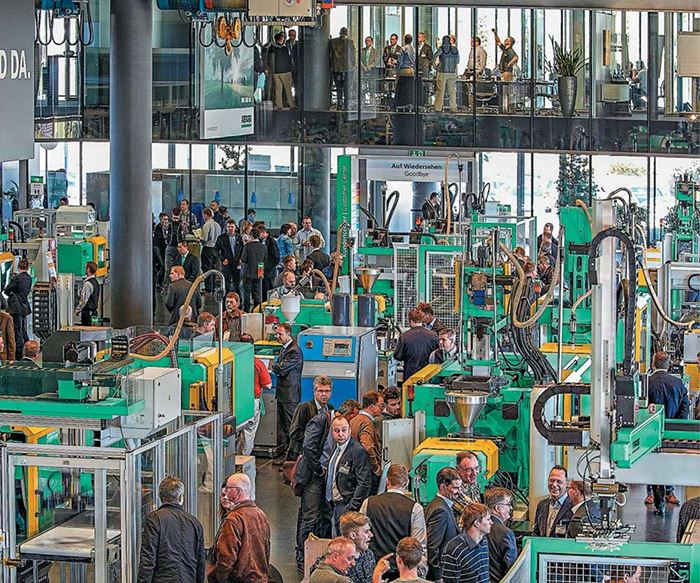
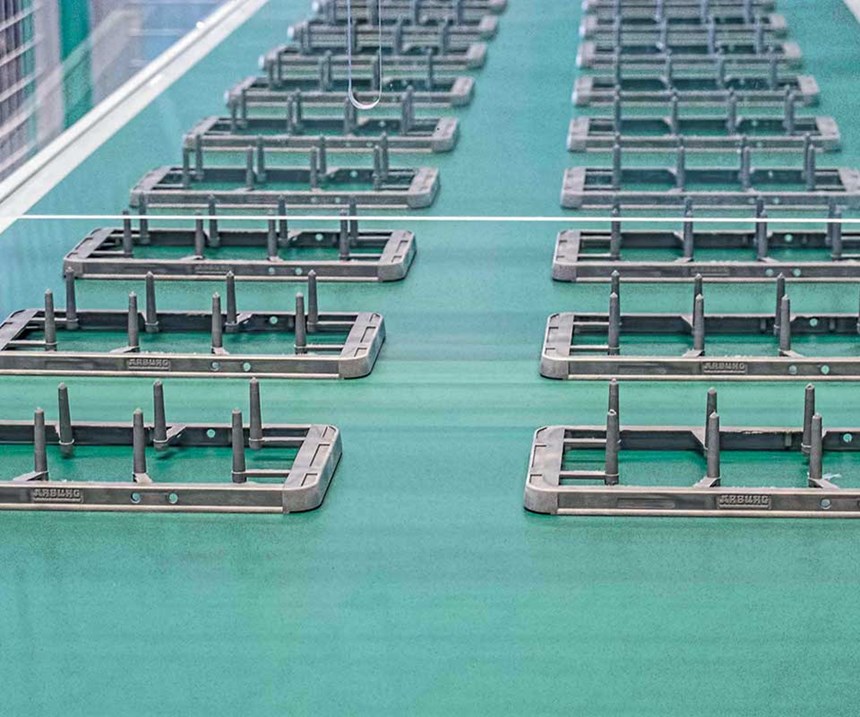

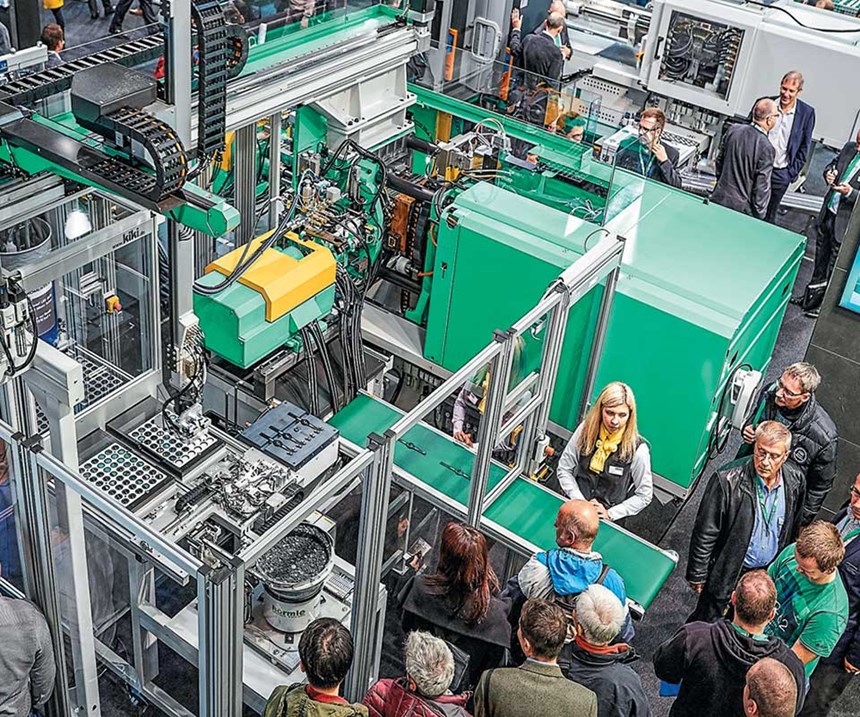
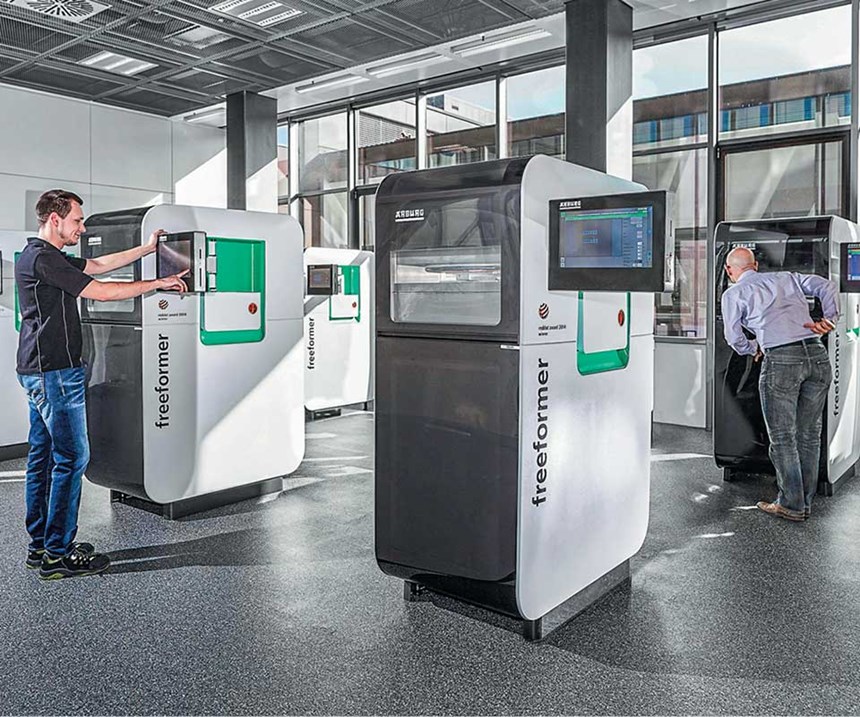


















.png;maxWidth=300;quality=90)
